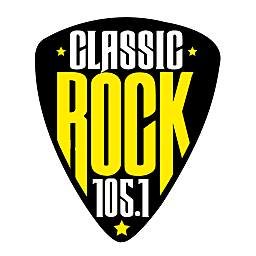
New Orleans Vitally Important Role on D-Day
While the news will be filled with stories of mankind's greatest wartime invasion seventy-five years ago on June 6 1944, let's take a moment and remember New Orleans' contribution to D-Day. In fact, without Andrew Jackson Higgins, the invasion might not have happened the same way.
According to General Dwight D. Eisenhower: Andrew Higgins is the man who won the war for us. If Higgins had not designed and built those LCVPs (Landing Craft, Vehicle and Personnel) we could have never landed over an open beach. The whole strategy of the war would have been different.
Think about this: what if you had to get off your cruise ship without a dock and get yourself onto the beach without crashing and grounding the cruise ship. With no dock, you’d need a very special smaller boat to go from the big ship to shore.
Higgins was described as a fiery-tempered Irishman, a man's man who could drink whiskey like a fish drinks water. He was equally fast whipping out his wallet for good causes as he was balling up his fist for the surly. He was an unapologetic businessman, having established the Higgins Lumber and Export Company around 1922.
As a wood importer, Higgins developed his own fleet of sailing ships and eventually owned so many he built his own shipyard and acquired tugs and other ancillary equipment to service his own fleet. Wanting to learn more about ships and how they were built, he graduated from the National University of Sciences in Chicago with a degree in naval architecture.
As the oil business grew in the south and particularly in Louisiana with its swampy bayous and ill-defined shorelines, oil drillers, explorers, and trappers needed a dependable way to move equipment from water to land and, in 1926, the growing industrialist designed the Eureka Boat.
The Eureka was a shallow draft vessel with a recessed propeller and shaft mechanism allowing it to run in the shallow bayous over flotsam and logs that would cripple a regular, prop-driven boat. Higgins designed a ‘spoonbill’ bow that allowed it to be driven up onto the land and then easily back off. His designs were so efficient, they got to be pretty fast and were famous for being able to be brought about (a nautical term for a u-turn) within their own length. Think zero turn mower.
Stiffening competition in wood exporting and the use of steamships to move wood across the oceans put the Higgins Lumber company out of business for the most part, but of course, he wasn’t beaten. He changed the name of the company to Higgins Industries and continued to build the oilfield boats, tugs, and other small vessels.
The Marine Corps gets the credit for initiating the need in the military for a beach type landing craft. Remember, they had prior experience on the "shores of Tripoli" and were always looking for more efficient methods of getting Marines off Navy ships and into fighting position on land.
When the Navy design board couldn’t come up with something workable, they somehow found the Eureka Boat used in the swampy oilfields. The spoonbill bow was great for getting on and off land, but equipment and people still had to go over the sides, which was super deadly while under enemy fire. Higgins had heard of the Japanese using a ramp-type front bow during their Pacific conquests in the 1930s and instantly improved upon it.
A Eureka Boat was tested less than a month later by the Marines again, this time with a dropping front deck that men and equipment could easily move from water to land and back again. Larger designs also allowed wheeled equipment like trucks and jeeps to move easily on and off shore. The Marines tested the Eureka Boats on the shores of Lake Pontchartrain and contracts were issued.
Higgins Industries was in New Orleans, and Higgins not only employed blacks but he also employed women. He was way ahead of his time in the area of what we now call diversification in the workplace.
Higgins employed people at his City Park Avenue plant who had skills and could produce no matter the color of their skin, their height, sex, weight. Nothing else mattered other than getting the job done.
Higgins knew the Japanese were a threat and occupied a lot of islands in the South Pacific, and he also knew the US Navy didn’t know a dang thing about building small boats, as they’d proven with the Marines' requests. He knew that getting onto the Pacific islands and off again would be a problem for the military.
When war broke out, Higgins had already upped the production of what we basically know now as the ubiquitous landing craft seen in war movies. When war broke out, since he’d previously demonstrated the effectiveness of the vessels, the War Department ordered as many as they could get.
The Higgins plants ultimately grew to some 85,000 workers and the company held some $350 million in contracts to build the landing craft, PT Boats, torpedo tubes, gun turrets, smoke generators, and a few more odds and ends necessary for maritime war.
As well-paid, diverse, and content as Higgins employees generally seemed to be, when the war ended, the government started to cancel contracts. The company had plans to expand its business to keep everyone employed, but Higgins Industries was targeted by labor unions. Multiple strikes cost Higgins, and his company started losing money. He started selling off the biggest plants to the highest bidders.
Though the company in New Orleans continued to produce a number of the Higgins landing crafts for the oil industry, the salad days of round-the-clock production were gone forever.
Both Presidents Roosevelt and Truman praised Higgins for his part in winning the war, both in the Pacific and in landings on European coasts such as the one on D-Day, and hundreds of others from North Africa, Italy, France, and across the Pacific chain of Japanese-held islands.
Without Higgins, the war would have been harder to fight, could’ve taken a lot longer and, without New Orleans and its dependable and skilled workforce, Higgins might not have been able to build up as quickly as he did.
Higgins died in New Orleans on August 1, 1952 and is buried in Metairie Cemetery. He’d been hospitalized for a week or so for stomach ulcers when he was hit with a fatal stroke.
Higgins held thirty US Patents for vehicles designed for amphibious landings. This is a man who was born thousands of miles from substantial navigable waters, in Nebraska, but he loved boats and was an incredible designer. He was a hard-drinking, two-fisted, take-no-prisoners attitude, pure industrialist: just the kind of man the United States is capable of producing, and New Orleans should be proud that he called it home.




